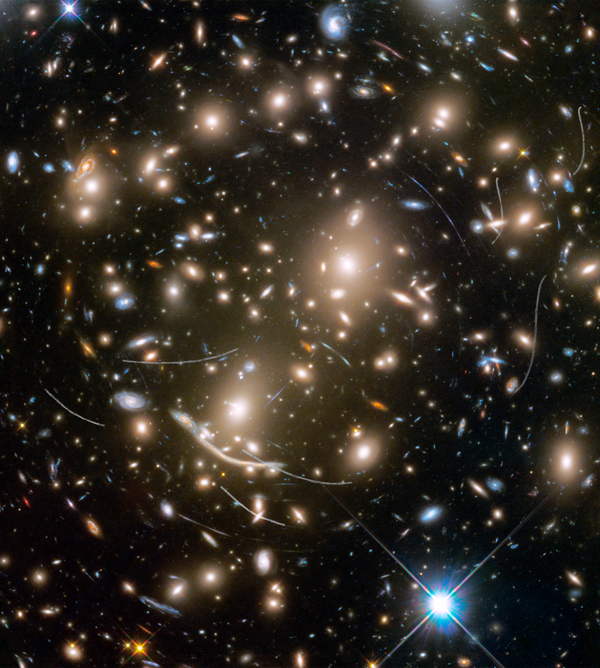What might be the most violent collision of galaxies ever observed has got a team of astronomers on high alert, keeping a close eye on two groups of galaxies currently moving towards each other at around 6.4 million kilometres (or 4 million miles) an hour.
With the drama unfolding at a distance of around 380 million light-years from Earth, in a system called NGC 6338, the two groups of galaxies will most likely form a larger group, known as a cluster, in a process that could offer priceless insights into how such clusters evolve, write the scientists in a study entitled “Building a cluster: shocks, cavities, and cooling filaments in the group–group merger NGC 6338”, published in the September issue of the Monthly Notices of the Royal Astronomical Society.
The team studying the anticipated event has enlisted some formidable assistance, such as the Chandra X-ray Observatory operated by NASA, the ESA's XMM-Newton in space, the Giant Metrewave Radio Telescope (GMRT) and the Apache Point Observatory on the ground.
"The NGC 6338 system provides an excellent example of both rapid radiative cooling and violent merger processes at the group scale," the team writes in a study documenting this collision.
While the speed of the galaxy collision makes NGC 6338 special, there is more than that…The heat issue also has researchers fascinated, as hot gas in the system is reaching around 20 million degrees Celsius (just over 36 million degrees Fahrenheit). This heating happening as the galaxy groups collide had been predicted by computer models before, but has now been observed for the first time.
There is a perplexing fact in the current data: what's missing is heat generated by supermassive black holes; this heat source is commonly found in galaxy groups and clusters, but it appears to be absent in NGC 6338.
Pulled together by gravity, galaxies frequently band together in groups and clusters, sometimes as large as made up of thousands of galaxies, say scientists, but astronomers still have plenty left to learn about the physics of such massive congregations.
Researchers have already found galaxy clusters invaluable in probing the mysteries of dark matter, as a method is used whereby starlight between the clusters is conducive to mapping where dark matter might be concealed.
The magnetic fields stretching between galaxy clusters potentially hold the key to explaining the gravitational dynamics of that bring these big groups of galaxies together.

Due to the forces at work, clustering of galaxies also affects star formation. As the two groups of galaxies currently being monitored rush towards each other, astronomers anticipate many more discoveries on the way.




